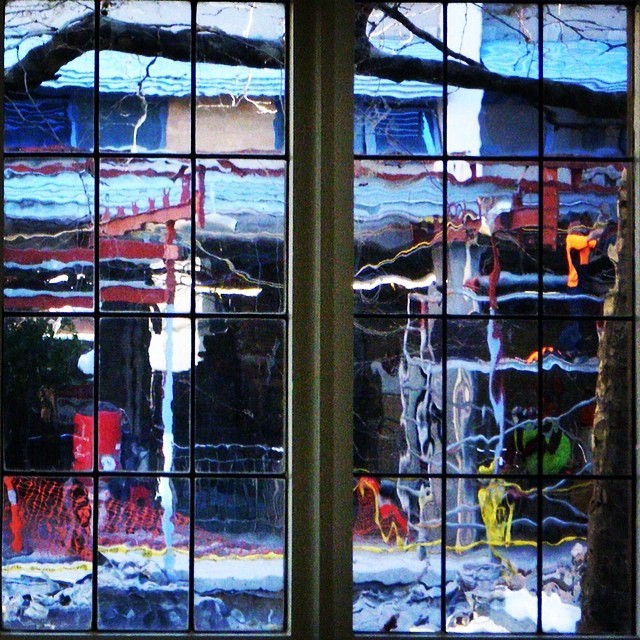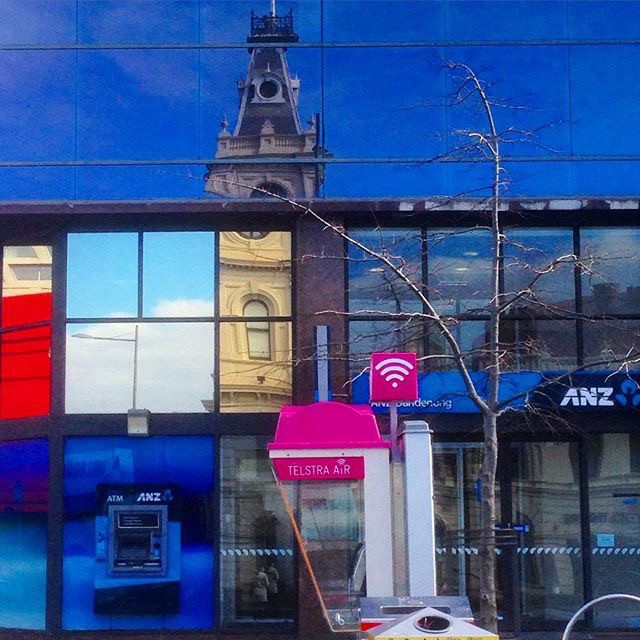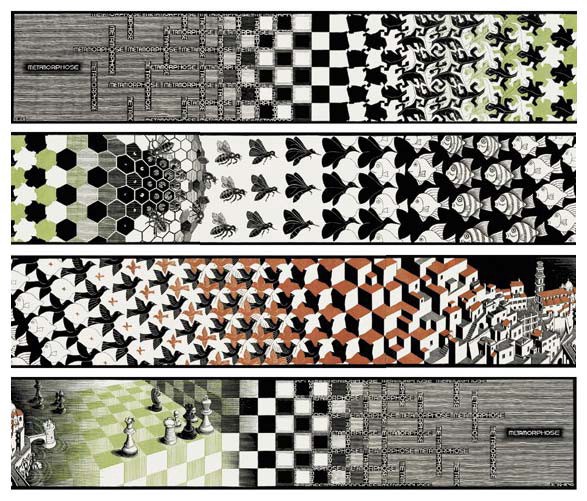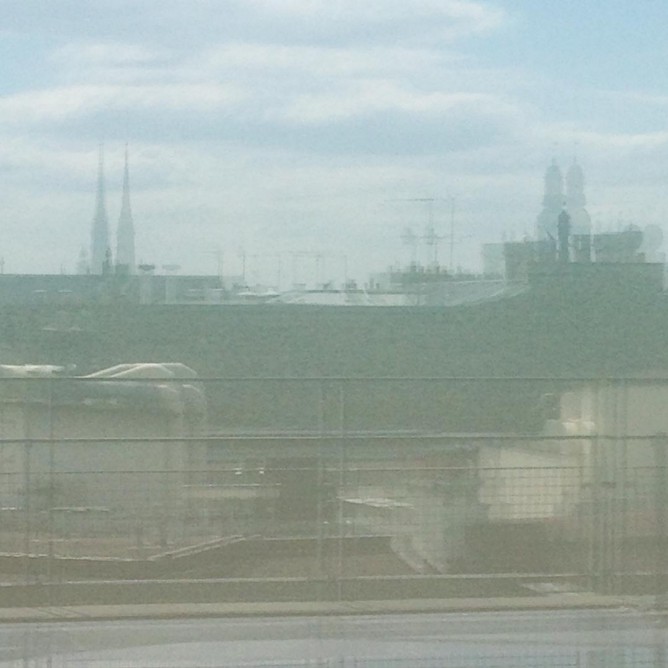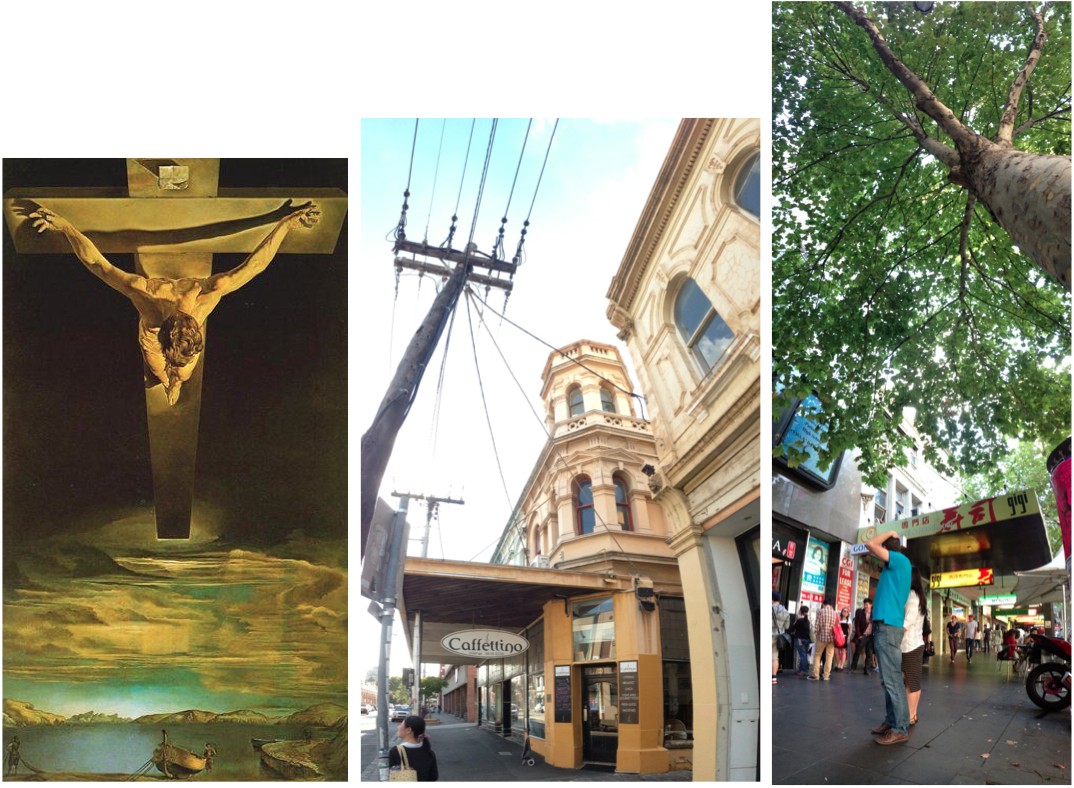The unusually thick glasses on the windows of the Old Art building in Melbourne University seem to be hand-polished, whose uneven surfaces naturally distort the view into an American expressionist painting.
The historic building of the Drum Theatre in Dandenong, Victoria was reflected on a modern office building across the road. The reflective windows reconfigured the image into an incongruent mosaic. You might call it photographic cubism.
This is a serendipitous photographic tribute to Metamorphosis II by M. C. Escher.
The glass wall of Centre Pompidou in Paris is made with a material that doubly refracts lights — like a piece of Iceland Spar.
I became interested in double refraction since I started to read the novel Against the Day by Thomas Pynchon. With chapter titles such as The Light Over the Ranges, Iceland Spar, Bilocations, and Against the Day, it appears that Pynchon is obsessed with light. Chapter 1 dwells one the Michelson–Morley experiment, which seems to suggest that a new understanding of light symbolizes a new understanding of the world.
I’ve always been fascinated by paintings with unusual perspectives. A fine example is Christ of Saint John of the Cross by Salvador Dali. The continuously changing perspective seems to suggest camera movement in a static painting. What imagination allowed Dali to create such a painting? I envision Dali tiling his head repeatedly in the studio, trying to distill his experience into a static composition.
One day when I was playing with my iPhone, I realised that by tiling the camera upwards in the panorama mode, it was quite easy to capture images with continuously changing view angle.
